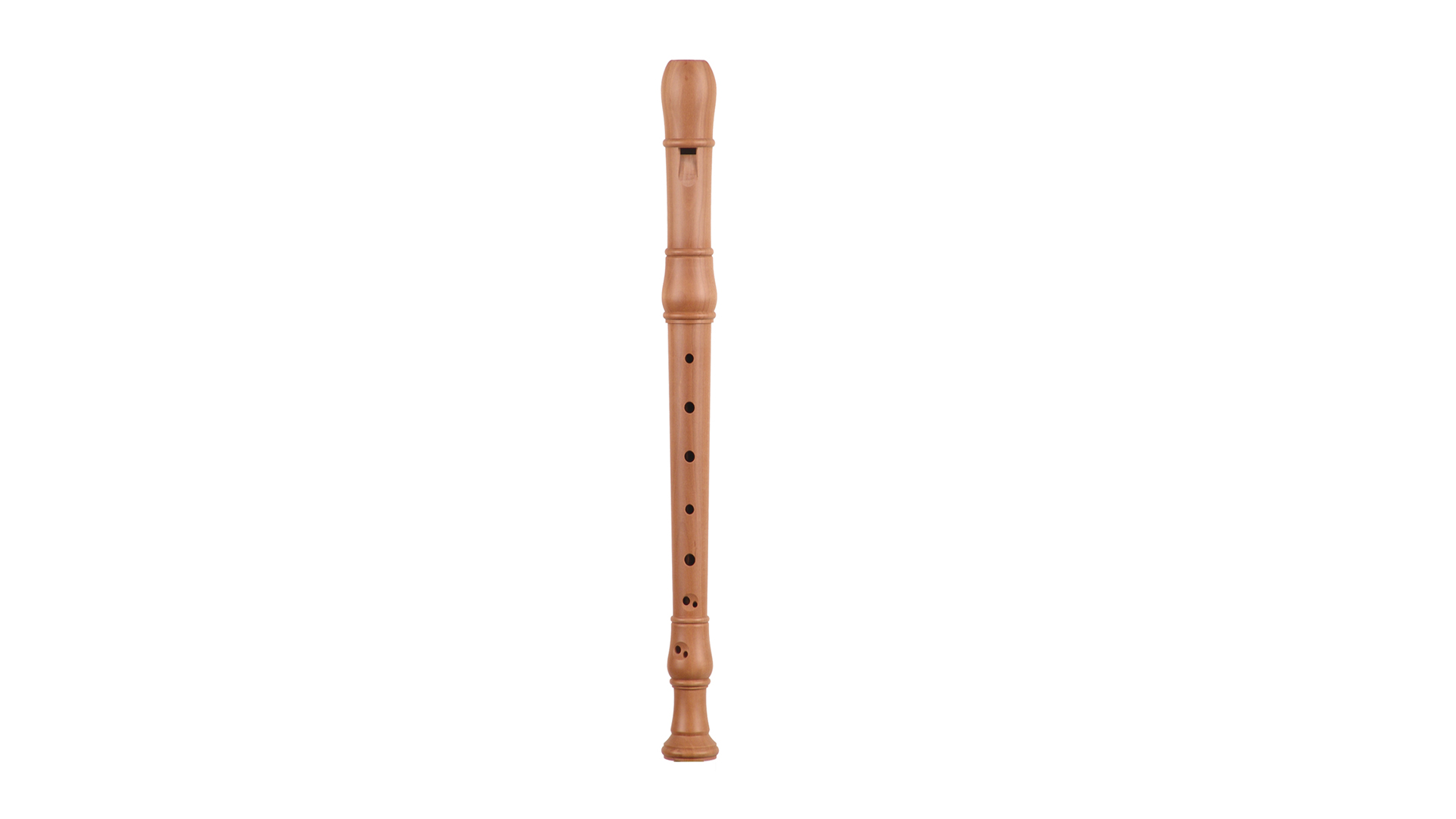Filter
–
Küng Forth Flute, Pearwood
Baroque Doublehole, Item: F1901-KUE
Natural, 442 Hz
The recorder with the model number: F1901-KUE crafted by Küng is a recorder, the in making music continues to will make joy.
This characteristic is due to the special marriage of the groundbreaking form in fine tuning with the advantages of the material Pearwood.
The material produces in this instrument a unique singularity, by the own unique sound. The qualities can best be described, whereas it is in the nature of things that sounds can always be described very inadequately with words. Therefore the material typical sound of recorders is perceived and described by each person inthe details a bit uniquely. We use these words: Pearwood: Soft, choral sound. Suitable for playing in a group
The bore
The course of the inner bore of the recorder is light cylindroconical. This kind of bore shape gives the recorder such a special tone.
In principle, instruments with wider bore sound warmer, fuller, more fundamental and thus more suitable for ensembles than models with narrower scale.
For which music can the recorder best be used for?
Pearwood is wonderful for recorders used for: Folk, popular music, dance songs and jazz.
To whom is this recorder addressed?
For the above facts it follows that instruments made of Pearwood are especially for ambitious amateurs and advanced players recommendable. A second to be heeded rule is that a valuable instrument makes the interaction as easier than a presumed low-cost bargain.
The windway of the recorder
The windway is the area in the head of the instrument where the breath is formed into a sheet of air. This air leaf is the central starting point of tone production.
In interaction with the labium, the air flow is very quickly alternately directed inwards and outwards. This swinging stream stimulates the air in the bore. And this is the origin of the recorder sound.
This is the reason why the labium must never be damaged. The same applies to the windway.
Otherwise suffer the influenceability of the possible sounds of the recorder.
The windway of the model F1901-KUE of Küng has this windway shape: Straight, conical.
Conical shaped windways accelerate breathing air more than cylindrical windways.
Never violate windway and labium! Their meaning for the instrument is very complex in their design.
Even minor damages here often lead to a total loss!
Fingerings
The recorder Küng F1901-KUE is manufactured in the version: Baroque Doublehole .
Construction of the body
The number of components a recorder shapes in many ways the way it in daily use on the one hand is uncomplicated to handle in terms of easy assembling and on the other hand for the safe transport.
This is a point that should not be underestimated, especially when transporting larger (and sometimes multiple) instruments.
{Experienced ensemble players can tell you a thing or two about this. Or ask members of recorder orchestras will agree.
Leaders of recorder orchestras know how useful good and compact recorder bags are.
Packaging and accessories
The instrument is offered as standard with: Bag
The matching accessories included: Wiper rod, fingering chart, care instructions
Advice before finding another instrument
Ask acquaintances!
The search for your recorder should in no case be influenced by "generally accepted" rules, such as "the material xy does not work at all in an "ensemble/for professionals".
Get your own realizations after trying a recorder. Don't let "generally valid" rules, such as "the flute xy doesn't work at all in an ensemble/for professionals.
Do not let others stop you from playing of an yet unknown instrument.
Your musical taste is as individual as you are.
Therefore, only you can decide which construction will achieve.
Our recommendation is therefore: Test different manufacturers!
After that you will be amazed and can make a confident decision.
Information about instruments with keys
Not always can tone holes be placed in the places in the body that are easy to grasp with the fingers. Especially with larger instruments sit for acoustic reasons some tone holes ergonomically not to reach. On such instruments, by the instrument maker keys are added, which make gripping clearly easier, or possible in the first place.
This allows it to be {pleasant|light|ergonomic|conspicuous|above average| good play even by players with smaller hands.
The instrument F1901-KUE has the following flaps:


